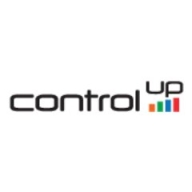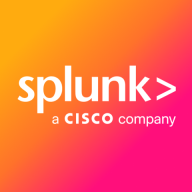

Splunk Observability Cloud and ControlUp are two leading platforms in the IT infrastructure monitoring category. Splunk Observability Cloud seems to have the upper hand in complex environments with its advanced visualization and analytics capabilities, while ControlUp is more tailored for endpoint monitoring and management.
Features: Splunk Observability Cloud specializes in application performance monitoring, offering end-to-end visibility, advanced visualization, and strong capabilities in log searching and real-time problem-solving. ControlUp provides real-time insights and automation for endpoint monitoring, delivering a high-level view of the IT estate and invaluable tools for VDI environments.
Room for Improvement: Splunk Observability Cloud users express difficulties with configuration complexity, particularly in log management and dashboard customization, and seek enhancements in automation and user interface. ControlUp could improve its integration with network monitoring and enhance mobile app functionality, while also focusing on enriched reporting and scalability.
Ease of Deployment and Customer Service: Splunk Observability Cloud is noted for its flexible deployment models and generally positive customer service, despite some reports of slow complex issue resolution. ControlUp's deployment process is intuitive and well-suited for on-premises adaptation, though service integration and faster support responses could be enhanced.
Pricing and ROI: Splunk Observability Cloud is seen as expensive due to data ingestion-based pricing but provides significant ROI when fully utilized. ControlUp offers competitively priced solutions with strong ROI, particularly valued in VDI settings, and is considered more cost-efficient compared to Splunk unless advanced capabilities are necessary.
| Product | Market Share (%) |
|---|---|
| Splunk Observability Cloud | 2.0% |
| ControlUp | 1.1% |
| Other | 96.9% |


| Company Size | Count |
|---|---|
| Small Business | 3 |
| Midsize Enterprise | 2 |
| Large Enterprise | 8 |
| Company Size | Count |
|---|---|
| Small Business | 20 |
| Midsize Enterprise | 10 |
| Large Enterprise | 43 |
ControlUp is a digital experience monitoring management platform that makes it possible for IT teams to deliver a work-from-anywhere experience for employees. The solution makes fixing and preventing issues easy, enabling IT teams to make smarter decisions. It also provides monitoring performance, availability, and useful productivity metrics.
The ControlUp platform supports:
ControlUp Features
ControlUp has many valuable key features. Some of the most useful ones include:
ControlUp Benefits
There are many benefits to implementing ControlUp. Some of the biggest advantages the solution offers include:
Reviews from Real Users
Below are some reviews and helpful feedback written by PeerSpot users currently using the ControlUp solution.
A Chair, IEEE Consumer Technology Society - Dallas,Texas, USA at a non-profit says, “In terms of the public cloud, ControlUp's features make us feel very secure. Security, uptime, and reduced capital expenditures are the main reasons we use ControlUp. So basically, the money that we consume is based on the amount of time we are using a service. ControlUp offers a return-on-investment type of approach that helps us.”
A VP Virtualisation and Citrix Engineer at BlackRock mentions, “Solve is quickly becoming one of the most-used features. Its interface allows us to connect to all 54,000 monitored endpoints in real-time. The script-based actions have allowed us to extend the core reporting capabilities. Combined with the triggers, we have been growing their usage to fix things before they become an issue. Lastly, the controller view allows us to compare the configurations of settings side-by-side which is extremely helpful when tracking down the RCA of an issue.”
A Senior Citrix Remote Access Engineer at Rabobank comments, “The high-level view of the estate coupled with powerful administration tools has been great. We can see real-time performance and trends and can create triggers for common issues with associated scripts that can automate a lot of the previous manual remediation steps.”
Splunk Observability Cloud offers sophisticated log searching, data integration, and customizable dashboards. With rapid deployment and ease of use, this cloud service enhances monitoring capabilities across IT infrastructures for comprehensive end-to-end visibility.
Focused on enhancing performance management and security, Splunk Observability Cloud supports environments through its data visualization and analysis tools. Users appreciate its robust application performance monitoring and troubleshooting insights. However, improvements in integrations, interface customization, scalability, and automation are needed. Users find value in its capabilities for infrastructure and network monitoring, as well as log analytics, albeit cost considerations and better documentation are desired. Enhancements in real-time monitoring and network protection are also noted as areas for development.
What are the key features?In industries, Splunk Observability Cloud is implemented for security management by analyzing logs from detection systems, offering real-time alerts and troubleshooting for cloud-native applications. It is leveraged for machine data analysis, improving infrastructure visibility and supporting network and application performance management efforts.
We monitor all IT Infrastructure Monitoring reviews to prevent fraudulent reviews and keep review quality high. We do not post reviews by company employees or direct competitors. We validate each review for authenticity via cross-reference with LinkedIn, and personal follow-up with the reviewer when necessary.